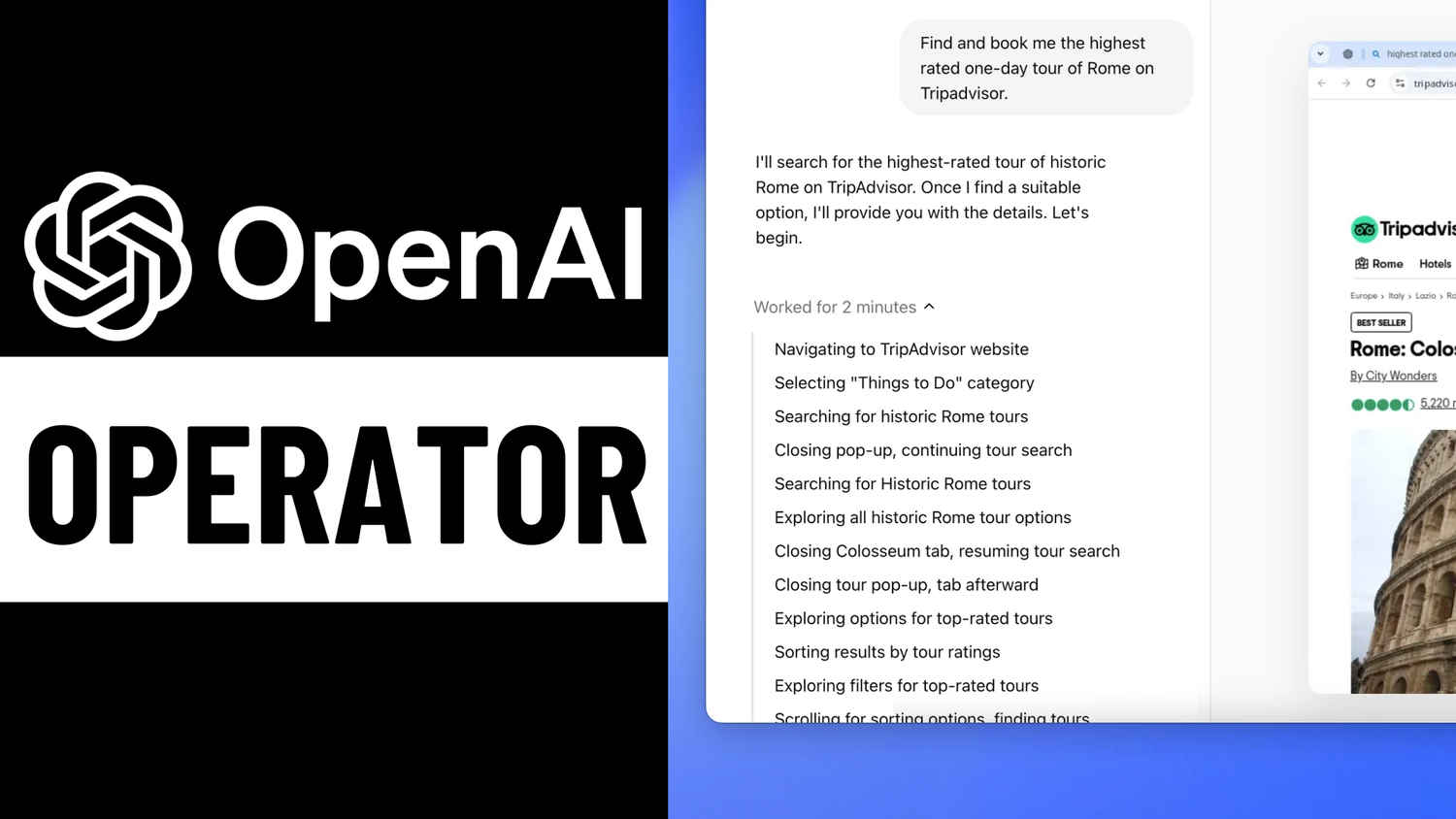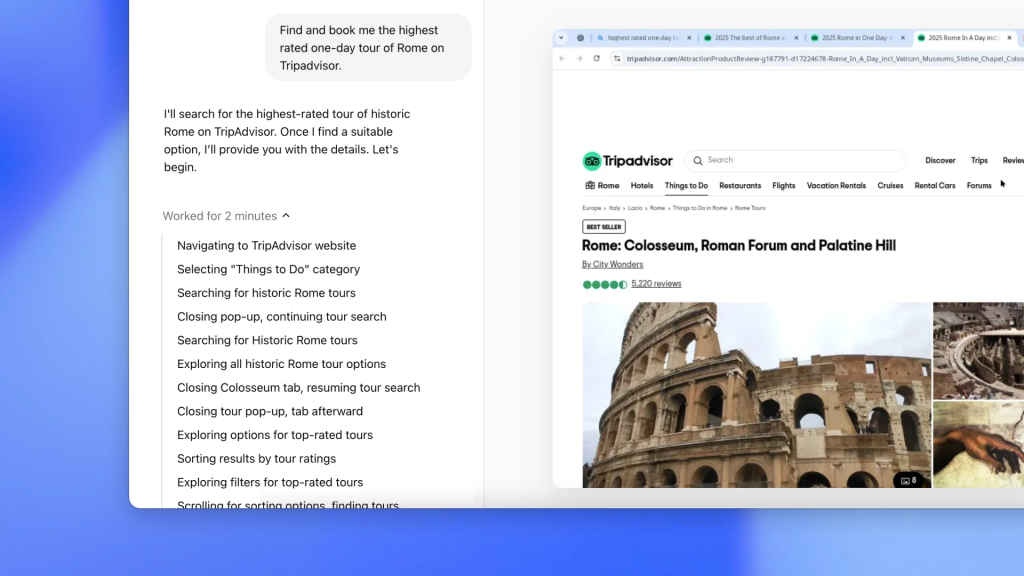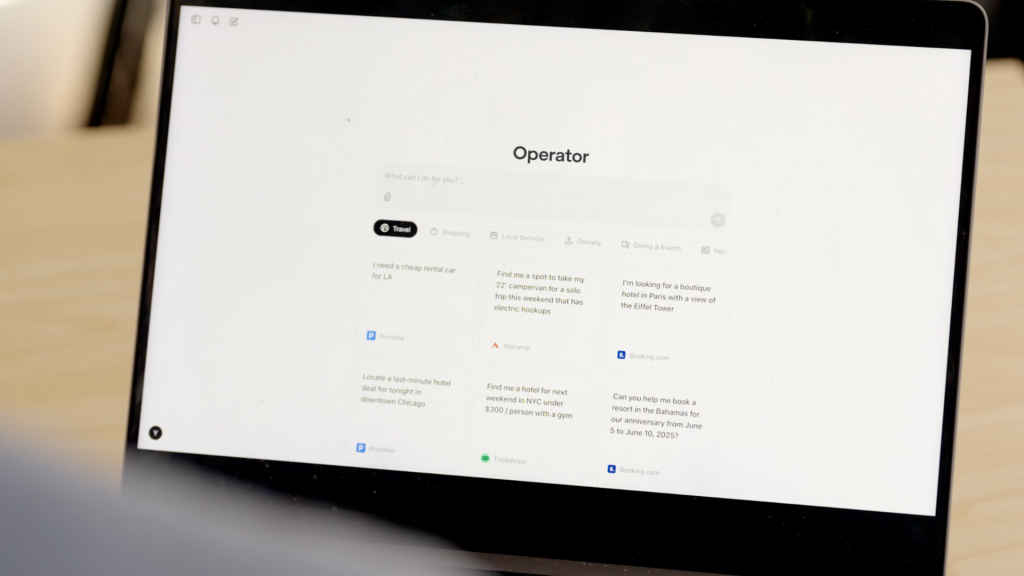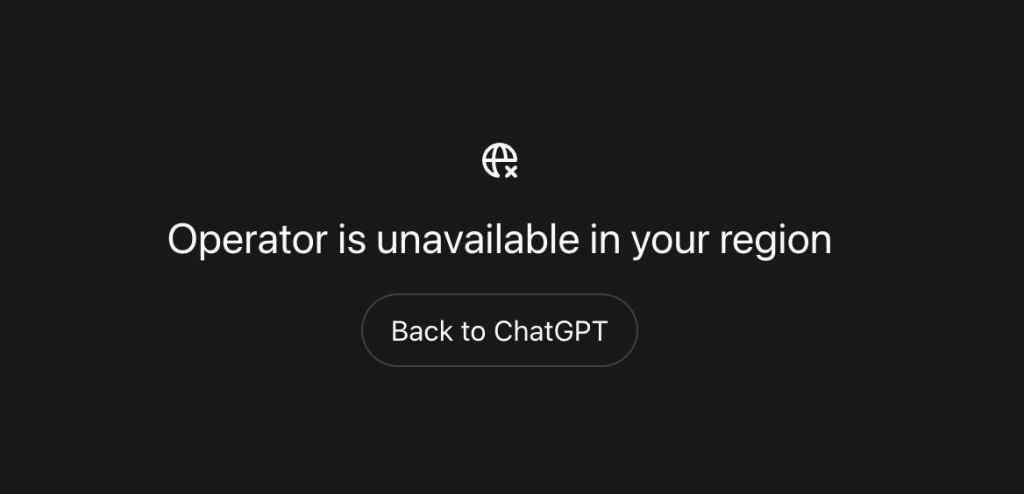OpenAI launches Operator: How will this AI agent impact the industry?

In a significant move towards redefining task automation, OpenAI has unveiled Operator, an autonomous AI agent designed to perform tasks within a web browser. Currently available as a research preview to Pro users in the United States, Operator is positioned as a step forward in streamlining digital workflows. Today’s digital world, driven by AI and its myriad applications, is increasingly defined by automation, from algorithms that curate social media feeds to bots that respond to customer queries. Yet, the notion of an AI agent autonomously navigating the internet and performing multi-step tasks represents a shift from specialised, pre-programmed tools to more generalised and adaptable systems. Operator doesn’t just promise convenience, it embodies a vision of AI as a collaborator, capable of taking on the mundane so humans can focus on what they do best.
The technology behind Operator
At the heart of Operator lies OpenAI’s Computer-Using Agent (CUA) model. The CUA seamlessly integrates GPT-4’s vision capabilities with advanced reasoning facilitated by the o1-mini model. This combination allows the AI to navigate and interact with websites in a manner akin to a human user. Operator can scroll through pages, click buttons, fill out forms, and even type – offering a hands-free solution for tasks like booking travel, managing accounts, or even creating memes. While the idea of an AI agent “using a computer for you” might feel novel, its potential utility is clear when you consider the myriad of repetitive online tasks that professionals handle daily.

Also Read: AI agents explained: Why OpenAI, Google and Microsoft are building smarter AI agents
Operator’s design allows it to emulate human interactions with web interfaces rather than relying on APIs or specialised integrations. This approach makes it adaptable to a broad range of use cases but also introduces challenges, such as navigating poorly designed websites or handling unexpected errors. OpenAI’s reliance on the o1-mini model for reasoning ensures that the Operator can dynamically adjust to varying conditions, but the technology is still a work in progress, particularly when it comes to ensuring consistent performance across the web’s diverse landscape.
Practical use cases of Operator
Operator’s applications are versatile. Imagine managing a small business where inventory needs to be updated across multiple e-commerce platforms. Instead of logging into each account and manually inputting data, Operator could take on the responsibility. Or consider planning a trip – finding flights, booking hotels, and managing itineraries across different platforms. Operator can simplify these complex, multi-step workflows into a few prompts.
For professionals, Operator could be a game-changer. Tasks like filling out expense reports, conducting online research, or monitoring market trends often consume a disproportionate amount of time. By delegating these to an AI agent, users can focus on strategic decision-making or creative problem-solving. Additionally, Operator’s ability to integrate with existing workflows – without requiring extensive customisation – means that it could be adopted by individuals and businesses alike with minimal disruption.

Also Read: Galaxy AI on Samsung Galaxy S25 series: Future of flagship AI on smartphones?
From a personal perspective, the prospect of using Operator to tackle mundane but necessary tasks is appealing. It might mean reclaiming the hours spent filling out forms or conducting repetitive research – time that could be better spent on more creative or strategic activities. However, this also raises questions about dependency. If an AI agent can handle a significant portion of our digital tasks, how do we ensure we maintain a working knowledge of these processes?
A careful rollout
It’s worth noting that Operator is currently in its early stages. OpenAI has limited its availability to Pro users in the United States, signaling a cautious approach to scaling this technology. There’s likely a combination of technical and ethical considerations at play here. For one, Operator’s reliance on real-time web interactions means it must contend with the unpredictability of web design and functionality. Websites are not standardized, and what works seamlessly on one platform might fail on another. Moreover, as Operator interacts with sensitive personal data, OpenAI must ensure robust safeguards are in place to protect user privacy and security.

From a technical standpoint, OpenAI’s decision to limit the rollout allows them to collect valuable user feedback and refine Operator’s performance before expanding access. Early adopters will play a crucial role in identifying bugs, usability issues, and edge cases that the development team may not have anticipated. This iterative process is essential for building trust and ensuring that Operator meets the diverse needs of its users.
Also Read: DeepSeek-R1, BLOOM and Falcon AI: Exploring lesser-known open source LLMs
Broader implications for automation
The launch of Operator is part of a broader shift in the AI industry – one that emphasises autonomous agents capable of performing increasingly complex tasks with minimal human oversight. This aligns with industry projections that autonomous agents will be a key focus in 2025, as organisations seek to improve efficiency and profitability. However, such advancements come with challenges, including the potential for misuse, ethical concerns, and the risk of over-reliance on automation.
For businesses, Operator offers a glimpse into a future where routine tasks can be delegated to AI, freeing up human resources for higher-value activities. But it also raises questions about the evolving role of human workers in an AI-driven landscape. While some roles may become obsolete, new opportunities will likely emerge around managing, training, and overseeing these autonomous agents. The potential for improved productivity is significant, but it must be balanced with strategies to address workforce displacement and ensure equitable access to the benefits of AI.

Limitations and future outlook
Despite its promise, Operator is not without limitations. Its ability to perform tasks depends heavily on the design and accessibility of the websites it interacts with. Websites with unconventional layouts, dynamic content, or complex CAPTCHA systems may pose challenges. Additionally, Operator’s current capabilities are unlikely to extend to tasks requiring deep contextual understanding or creative problem-solving – areas where human judgment still reigns supreme.
Moreover, Operator’s reliance on web interactions introduces potential vulnerabilities. For instance, if a website’s interface changes unexpectedly, the AI may struggle to adapt in real time. There are also concerns about how Operator handles sensitive information, such as login credentials or personal data. OpenAI’s commitment to user privacy will be a critical factor in determining the technology’s long-term adoption and success.
Also Read: India’s AI Dreams at Risk? US GPU Clampdown Explained: What does it mean for consumers?
Looking ahead, OpenAI’s measured approach to Operator’s rollout suggests that the company is prioritising refinement and user feedback over rapid expansion. As the technology matures, we can expect iterative improvements, increased accessibility, and perhaps even integrations with other OpenAI products or third-party platforms. For now, Operator remains an intriguing glimpse into what’s possible, offering just enough functionality to hint at a future where AI agents become indispensable tools in our digital toolkits.
Operator’s success will depend not only on its technical capabilities but also on how well it integrates into users’ lives. Will it become an indispensable tool that enhances productivity, or will it be seen as an optional luxury for tech-savvy early adopters? As with any new technology, the answer will likely depend on how OpenAI addresses the challenges of accessibility, security, and trust.
Also Read: What is ChatGPT Tasks: Automating productivity, one reminder at a time
Satvik Pandey
Satvik Pandey, is a self-professed Steve Jobs (not Apple) fanboy, a science & tech writer, and a sports addict. At Digit, he works as a Deputy Features Editor, and manages the daily functioning of the magazine. He also reviews audio-products (speakers, headphones, soundbars, etc.), smartwatches, projectors, and everything else that he can get his hands on. A media and communications graduate, Satvik is also an avid shutterbug, and when he's not working or gaming, he can be found fiddling with any camera he can get his hands on and helping produce videos – which means he spends an awful amount of time in our studio. His game of choice is Counter-Strike, and he's still attempting to turn pro. He can talk your ear off about the game, and we'd strongly advise you to steer clear of the topic unless you too are a CS junkie. View Full Profile




